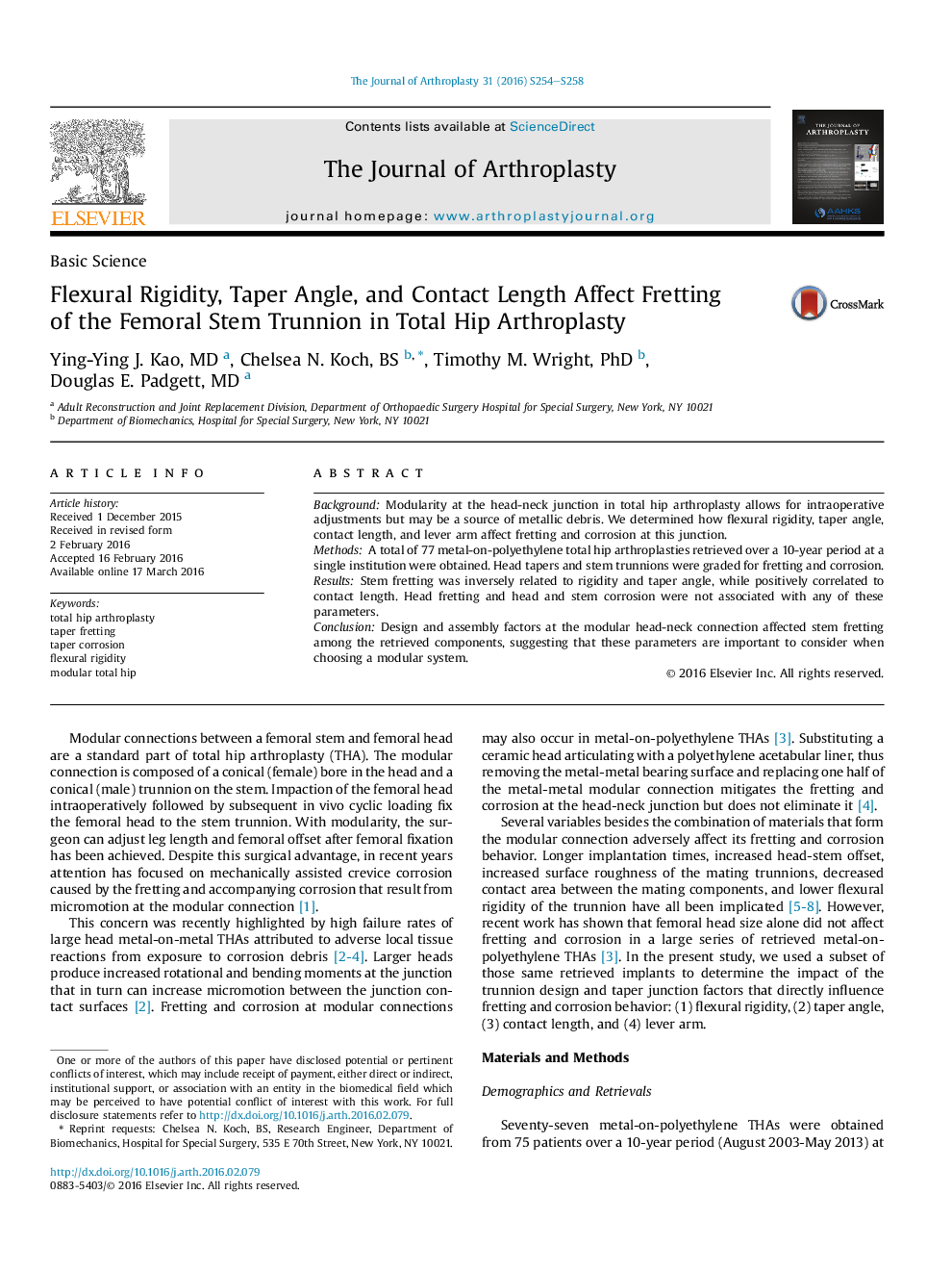| Article ID | Journal | Published Year | Pages | File Type |
|---|---|---|---|---|
| 6208426 | The Journal of Arthroplasty | 2016 | 5 Pages |
BackgroundModularity at the head-neck junction in total hip arthroplasty allows for intraoperative adjustments but may be a source of metallic debris. We determined how flexural rigidity, taper angle, contact length, and lever arm affect fretting and corrosion at this junction.MethodsA total of 77 metal-on-polyethylene total hip arthroplasties retrieved over a 10-year period at a single institution were obtained. Head tapers and stem trunnions were graded for fretting and corrosion.ResultsStem fretting was inversely related to rigidity and taper angle, while positively correlated to contact length. Head fretting and head and stem corrosion were not associated with any of these parameters.ConclusionDesign and assembly factors at the modular head-neck connection affected stem fretting among the retrieved components, suggesting that these parameters are important to consider when choosing a modular system.
